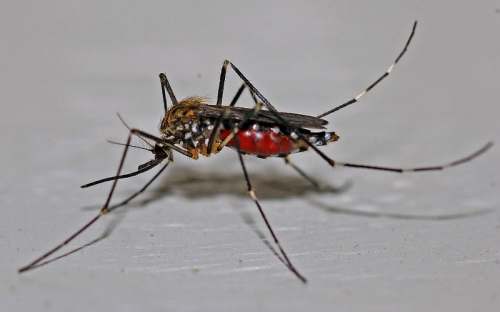{article.name}
Stay Informed
West Nile Virus in Horses

- Share this:
- Share on Facebook
- Pin on Pinterest
- Tweet on Twitter
West Nile virus can be a dangerous infection for many animals, and recognizing West Nile virus in horses and how to treat it can help all horse lovers protect their animals from this disease.
West Nile Symptoms in Horses
West Nile virus is spread through mosquito bites, and even an animal as large as a horse can be susceptible to the infection if they are bitten by just a single disease-carrying mosquito. While not all horses will show the same symptoms, common indications of West Nile in horses include…
- Lack of balance, including staggering, stumbling or clumsiness
- Appetite loss or lack of interest in food
- Weak hind limbs, possibly mild paralysis
- Impaired vision
- Convulsions or irregular spasms
- Depression
West Nile virus may be dormant in a horse for 5-15 days before symptoms begin to appear, and symptoms may vary between different animals. If multiple symptoms are noticed, however, it is important to seek professional veterinary treatment right away.
Treating West Nile Virus
While there is no specific treatment for West Nile virus, it is possible to treat individual symptoms to relieve a horse's discomfort and help them fight the infection. The more comfortable and at ease the horse can be, the better they will be able to recover.
Preventing West Nile Virus in Horses
The best way to treat West Nile virus is to prevent horses from contracting the infection in the first place. There are vaccines available, but even if they are administered annually, they are not considered 100 percent effective. Ideally, it is best to remove or eliminate mosquitoes that may be carrying the virus in order to prevent horse infections.
- Eliminate all standing water that can harbor breeding mosquitoes. Even small water sources – rain gutters, discarded tires, wheelbarrows, kiddie pools, dirty bird baths – can be mosquito breeding grounds, and the more mosquitoes there are in the area, the more likely infections may be.
- Improve field and corral drainage to minimize standing water or excessive moisture. This includes improving drainage on roads, trails and paths, and ensuring that sprinkler systems or automatic waterers are functioning properly to avoid excess water.
- Aerate pools and ponds to keep the water moving so mosquitoes do not have the opportunity to breed. This will keep the water fresher and reduce insect populations, lowering the risk of infectious insects.
- Move horses indoors during the most active mosquito periods – dawn and dusk are particularly active times for mosquitoes to feed and horses are more at risk. Ideally, stable doors and windows should be appropriately screened to keep out mosquitoes.
- Applying large scale insecticide treatments if necessary to lower mosquito populations over large areas, though chemical treatments should be administered carefully to not endanger horses with toxic contamination.
West Nile virus can be dangerous in horses, but by taking steps to prevent infections and quickly recognizing symptoms of the infection, it is possible to minimize the risk to all horses and keep them healthy.
Special Offers
We are constantly adding new specials to our site. Be sure to check back often!


Comments